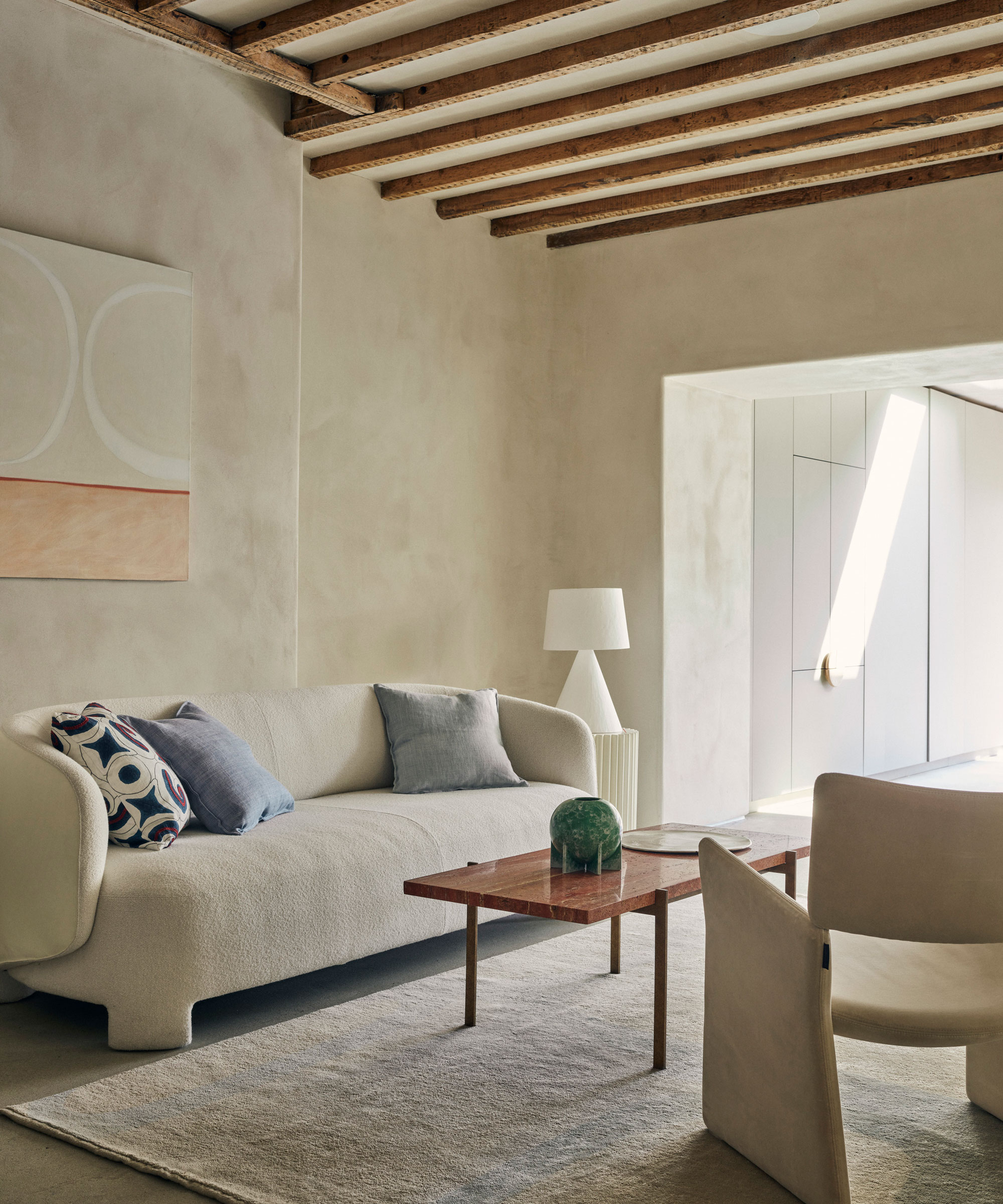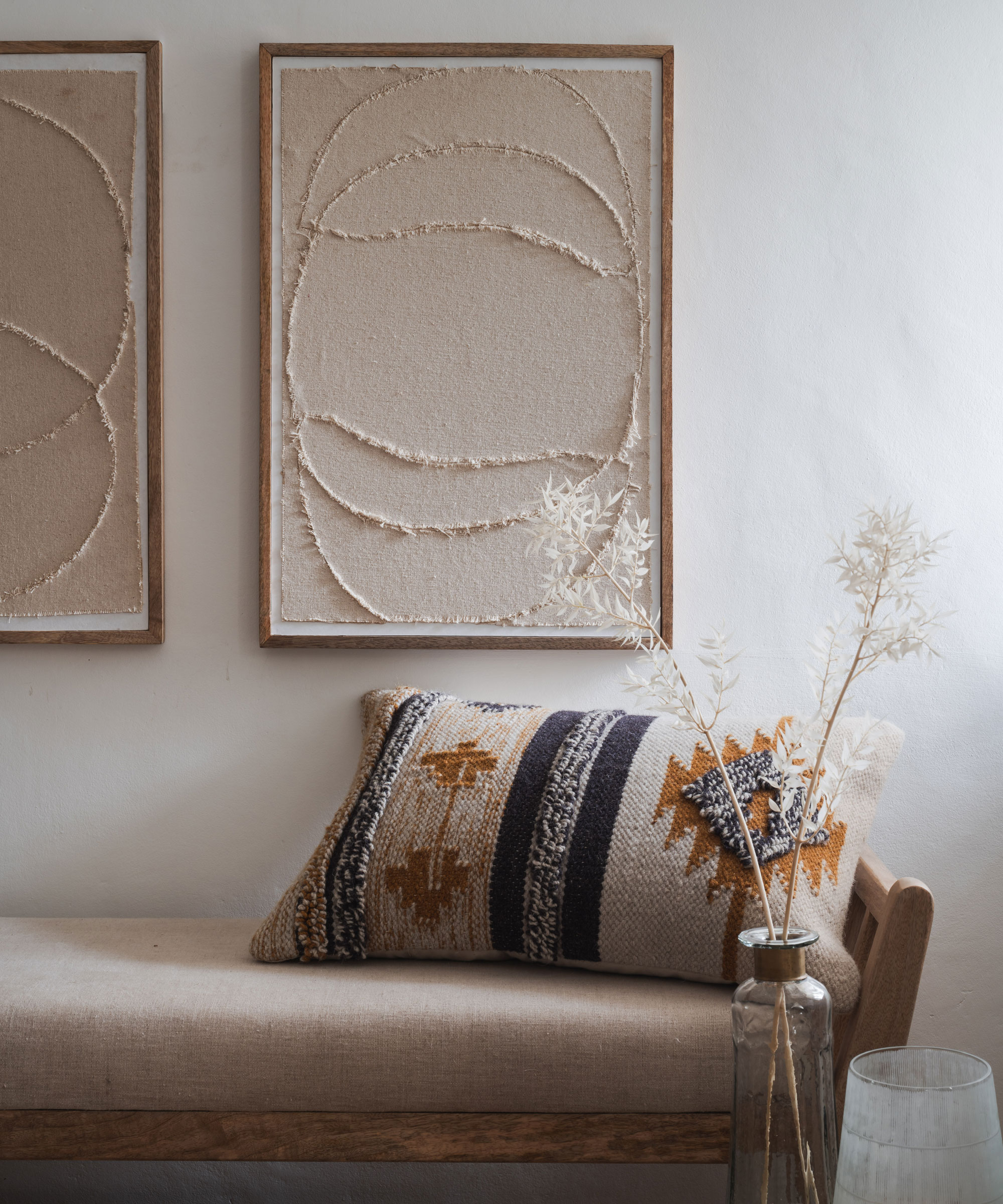
Crafting a minimalist living room that includes plenty of texture is vital for those wanting a space that exudes warmth and comfort. However, creating texture is not simply just about how decor and soft furnishings feel, but it's also about 'visual texture' – using different materials to add interest to a room.
To the untrained eye knowing how to use texture in interior design can be a mystery. Yet, by looking at Bri Larson's chic, light-filled den, the actress, has been tutored well on the subject.
The precise art of blending varying textured layers using a carefully chosen and consistent palette converts the compact room into a welcoming yet refined snug that eludes 'quiet luxury'.
'Texture will always be a key interior feature used to add depth and interest to a space, particularly important for creating a warm and welcoming home,' says Olivia Crosher, a designer and visual stylist for Naturewall.
Texture is a theme with comfort at its core and this natural and neutral room scheme, in Bri Larson's Californian home embraces relaxing tones and textures often associated with Mediterranean shores and sunnier climes.
This nod to balmy climates embraces the resurrected interest in earthy tones that is currently plunging minimalist schemes into new depths.
'In contrast to the stark, minimalist spaces of recent years, warm minimalism embraces a sense of comfort and coziness,' says Rob Chadwick, director of CGC Interiors.
'This style is characterized by natural materials, soft textures, and muted colors that create a tranquil and inviting atmosphere.'

Removing non-essential clutter will allow another key layer of texture to flow into a minimalist Mediteranean scheme; natural daylight.
The manipulation of light will open up a compact room to allow a backdrop consisting of natural elements such as smooth raw plaster and wood cladding on the ceilings to be showcased in detail without closing up the sense of space.
'Focus on keeping your living space clean and well-balanced by implementing a more cohesive palette', confirms Stacey Clarke, general manager at B2C Furniture.
'Combine airy and light textures with natural elements, as this promotes a sense of balance and harmony.'

Soft furnishings with artisan influences will offer a tactile layer of visual weight that hones in on organic warmth. Invest in fabrics such as linen, jute, or canvas.
Finish with a soft and natural color injection using draught-loving plants that grow silvery green and sparse foliage such as the olive, that benefit from a warm indoor environment.







